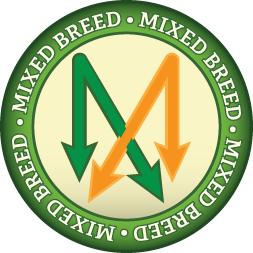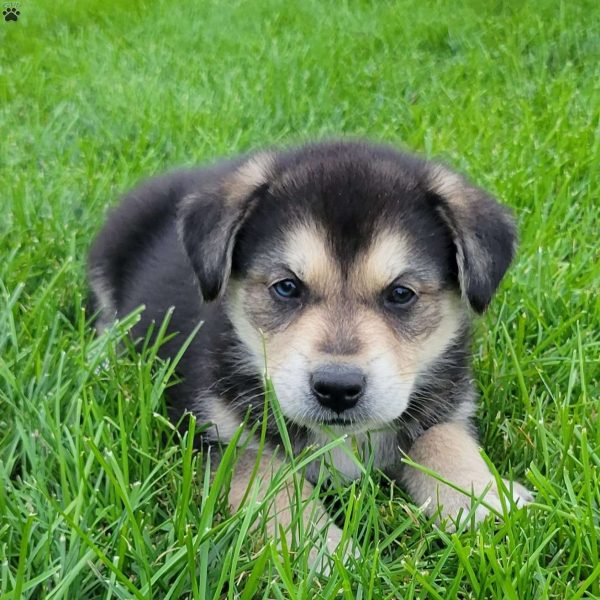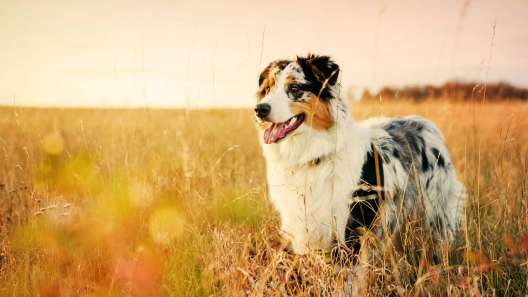
-
Activity Level:
moderate
-
Shedding Level:
moderate
-
Grooming Level:
moderate
-
Trainability:
low
-
Good for Novice Owners:
moderate
-
Adaptability:
moderate
-
Kid/Pet Friendly:
often
-
Prey Drive:
moderate
-
Watchdog:
very alert
- Average Size: Large
- Average Lifespan: 10-12 years
Great Pyrenees Mix Dog Breed Information
Overview
Temperament
Adaptability
Health
Owner Experience
Grooming
Activity Level
Size
Life Span
A Great Pyrenees Mix is a cross between a Great Pyrenees and another dog breed. Because a mix can take on any combination of traits from their parents, it’s important for you to ask the breeder about the other parent breed in the mix.
If a Great Pyrenees Mix takes after their Pyr parent, they will be a large, powerful, and intelligent dog that is loyal and affectionate with their families. They will also be protective of them.
Great Pyrenees tend to have a calm and patient nature. Although they are a serious, focused, and independent working dog, they often have a sweet, gentle, and affectionate personality with their families.
They tend to get along well with children and other pets and tend to take on a guardian role. Their protective instinct makes them wary of strangers, but they will open up once introduced as long as they have been properly socialized.
If the other parent breed has a similar temperament, then you should be able to expect something similar from a Great Pyrenees Mix. In addition to talking to the breeder about the other parent breed, you can also meet the mother in person.
This allows you to see what her temperament is like and what behavior she is modeling for her puppies. The breeder should have started some socialization and training, but it is up to you to continue to train and socialize a puppy once you get them home.
A Great Pyrenees is a moderately adaptable dog. They are built to roam and wander, so do best in homes with fenced yards. They do well in the cold, but are sensitive to heat. Although they are one of the most independent dog breeds and can handle some alone time, they may become bored and destructive if left alone for too long.
The other parent breed will introduce their own quirks and traits that may affect adaptability, so you do want to ask the breeder about them. You also want to be aware of any potential quirks you should be prepared for in a Great Pyrenees Mix.
Although a mixed-breed dog can sometimes be healthier than a purebred dog, it’s not a guarantee. Just as they could inherit none of the conditions common to their parents, they could inherit some or all of them. Good breeding practices make a huge difference.
From the Pyr side, potential health conditions to be aware of in a Great Pyrenees Mix include patellar luxation, elbow dysplasia, hip dysplasia, eye conditions, and some types of cancer. Reputable breeders will screen their dogs to avoid passing issues to puppies, so make sure you ask about the health and genetic history of both of the parents.
As a large dog breed, the Great Pyrenees can be at risk for bloat, which means a Great Pyrenees Mix may also be at risk for bloat in dogs. Because of this, it’s important to learn how to reduce the risk and also identify symptoms so you can get help as soon as possible.
A Great Pyrenees is an independent work dog that is used to making their own decisions and working without guidance. They are highly intelligent and are capable of picking up on things quickly, but they often don’t see the point of responding to basic commands and may be slow to respond or choose to not respond at all. Because of this, they are a better fit for experienced owners.
Even if the other parent breed is a good fit for first-time dog owners, you need to be prepared for the potential of a Great Pyrenees Mix that may be a challenge to train. Being prepared to enroll in puppy training classes and to enlist the help of a professional trainer is a good idea with this mix.
A Great Pyrenees Mix can inherit a coat similar to one of their parents or one that is a mix of both. If they inherit a Pyr coat, they will shed year-round and more heavily when seasons change. Weekly brushing, brushing a few times a week during seasonal shedding, and the occasional bath are enough to keep a Pyr coat healthy.
In addition to coat care, you will also need to take care of your Great Pyrenees Mix’s nails, ears, and teeth. Nail trims once or twice monthly are usually enough to keep them from growing too long.
Ear checks weekly with careful cleanings as needed can help prevent ear infections. Brushing teeth or using an enzyme toothpaste daily along with cleanings at the vet when needed can help prevent dental disease later in life.
The Great Pyrenees may be a working dog and need a job to do, but they sit in a more moderate activity range. Daily walks plus some activity to get them moving are usually enough. If the other parent breed has a higher or lower activity range, you will need to be prepared for that potential range in a Great Pyrenees Mix.
A fully-grown Great Pyrenees usually stands 25-32 inches tall and weighs 85-150 pounds. The other parent breed can have a big effect on this, especially if they are the mother.
It’s not a guarantee, but you can meet the mother in person to get an idea of what size to expect in a fully-grown Great Pyrenees Mix.
Great Pyrenees generally live for 10-12 years. Although the other parent breed may affect this slightly, you should be able to expect a similar average life span from a Great Pyrenees Mix.









